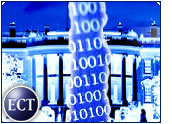
While the digital divide — the rift between those with access to computers and the Internet and without — continues to crumble in the United States, analysts generally agree that e-commerce is not seeing a major share of the benefits.
On the other hand, researchers are finding evidence that e-commerce services do play a significant role in alleviating the disparities among races and genders that exist in offline buying situations — for example, when it comes to buying a car.
A recent study by the Yale School of Management and the University of California at Berkeley’s Haas School of Business found that the Internet serves as “an equalizer” for those whose demographic characteristics — primarily African-Americans, Hispanics and women — might end up costing them at a car dealership.
Researchers found that minority buyers pay about 2 percent more than white customers — about $500 on the average car — at a dealership. Most of this difference is due to factors such as differing income, education and search costs, the study said. It did not reveal evidence of statistical race discrimination.
On the Internet, however, minorities pay the exact same prices as non-minorities, regardless of income, education or other factors, according to the study.
Negotiating Factors In
There was no indication that minorities or women dislike bargaining or that they decide to shop at pricier dealerships. The difference arises, said researchers, because car prices are negotiated at a dealership, and socio-economic factors often influence buyers’ negotiating skills.
For example, the study found that people who come from neighborhoods with a higher percentage of college-educated residents pay lower prices at dealerships than the average consumer. On average, women pay 0.2 percent more than men — about $45 on the average car.
In contrast, said UC Berkeley marketing professor Florian Zettelmeyer, online car-buying services demonstrate the “knowledge is power” principle, putting all consumers on the same footing.
“The Internet gives everyone a degree of anonymity, to the point where any customer looks and acts just like everyone else,” Zettelmeyer told the E-Commerce Times.
The study, released December 11th, was conducted by Zettelmeyer and Yale economics professor Fiona Scott Morton, using car purchase data from J.D. Power and Associates and Internet usage data from car-buying referral site Autobytel.com (Nasdaq:ABTL). In conducting the study, researchers analyzed 700,000 new-car purchases made in 1999.
Leveling the Field
Zettelmeyer said the general findings can be applied to other situations were consumers must negotiate prices with a salesperson or choose from numerous pricing options, such as buying life insurance.
“The research showed to us that not only are minorities less likely to use the Internet, but that they would benefit more than others by accessing it in these situations,” he said. “Ithink this makes a strong argument for doing what we can to eliminate the digital divide.”
Andrew Bartels, research leader for e-business at Giga Information Group, noted that online car buying brings other benefits for low-income consumers — for example, the chance to findbetter prices outside their immediate neighborhoods.
Few Benefits for Industry
Experts agree that the digital divide in the U.S. has narrowed in recent years, aided by government efforts and rapidly falling PC prices. But since income is a bigger factor than Web access when it comes to whether consumers will spend when shopping online, analysts say the divide’s erosion is having minimal financial impact on e-commerce.
According to Bartels, the digital divide is being approached primarily from the standpoint of increasing the access that minorities and others have to information and basic services. For example, lawmakers are moving to put free-access computer stationsand kiosks in schools, libraries and government buildings.
E-commerce companies have a different goal — targeting people with disposable income, who in most cases already have Internet access.
“The government can’t cherry-pick,” said Bartels. “They’ve got to be able to offer these services to people of all incomes.”
No Card, No Click
Even after getting access, lower-income consumers face other barriers in using e-commerce sites.
Christopher Baum, a vice president and electronic government analystfor Gartner, believes that since credit cards remain the primary method of payment on product sites, many buyers with credit problems cannot take advantage of the Web.
Slow and Go
“Even if people do decide to go online, they tend to tiptoe toward e-commerce, not buy things right away,” said Forrester analyst Christopher Kelley.
Kelley said research indicates it is usually about a year before those who go online begin to buy products on the Web. Privacy and security remain the biggest concerns for those inall demographic groups who remain skittish about buying online.
Numbers Count
According to year 2000 figures from the U.S. Department of Commerce, there was at least one computer in 73.2 percent of homes with incomes between $50,000 and $74,999. Forhouseholds making $75,000 or more, the figure was 86.3 percent.
By contrast, computers were in 30.1 percent of homes with incomes between $15,000 and $25,000, and the figure dropped to 19.2 percent for incomes under $15,000.
“The economic downturn is currently a greater factor in e-commerce than the digital divide,” Baum said.
Narrowing Straits
The Commerce Department reported that 55.7 percent of white households had a computer, 32.6 percent of African American households, 65.6 percent of Asian-American homes, and 33.7 percent of Hispanic households owned a computer.
The 2000 figures showed 50.3 percent of whites used the Internet (up from 37.6 percent), 29.3 percent of African Americans (up from 19 percent), 49.4 percent of Asian-Americans (up from 35.8 percent) and 23.7 percent of Hispanics (up from 16.6 percent).













































Social Media
See all Social Media